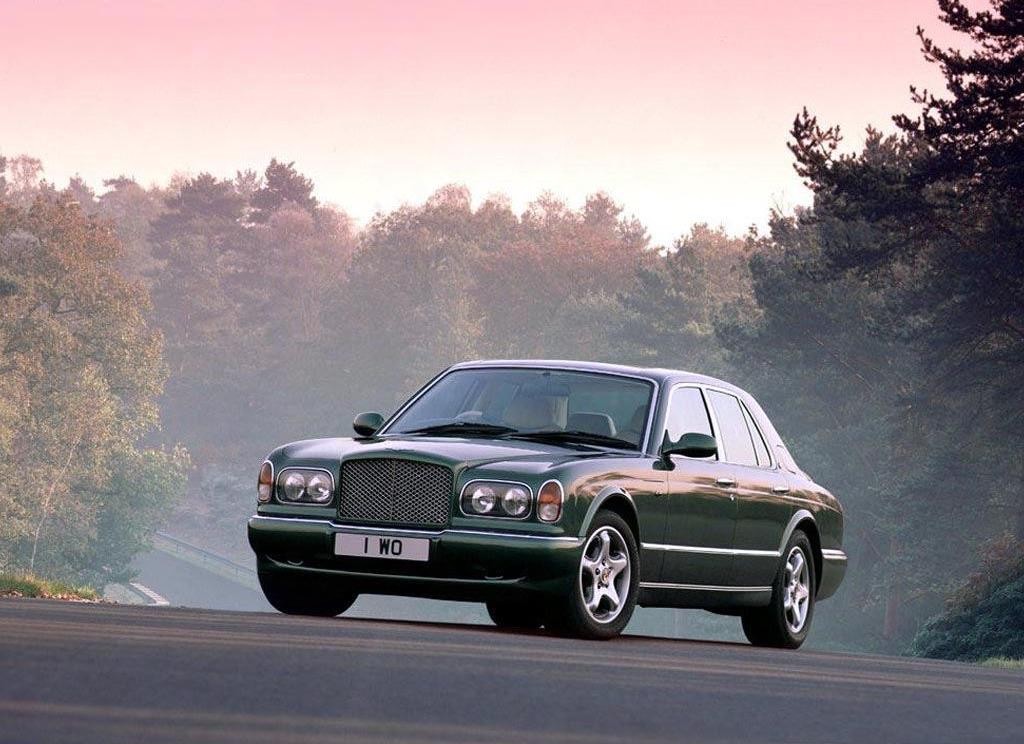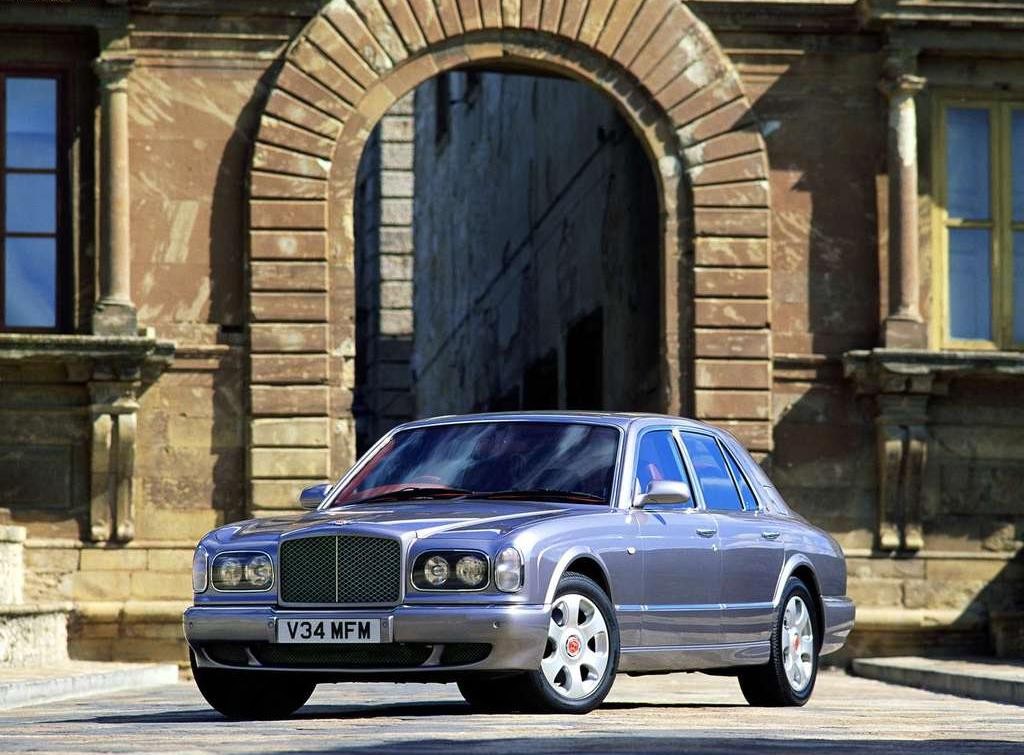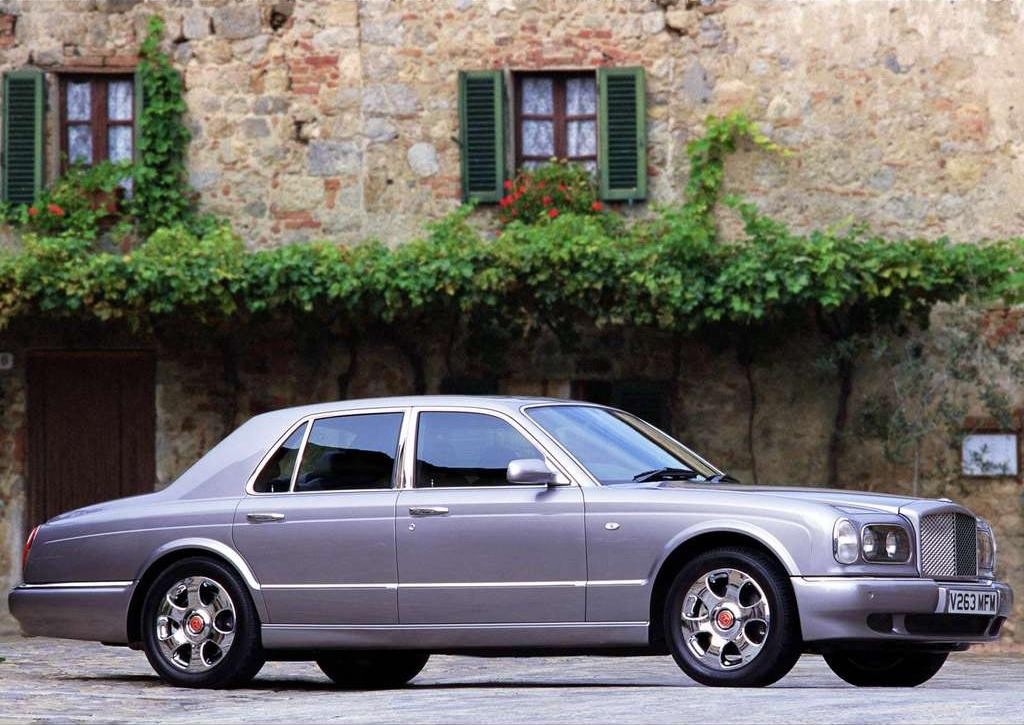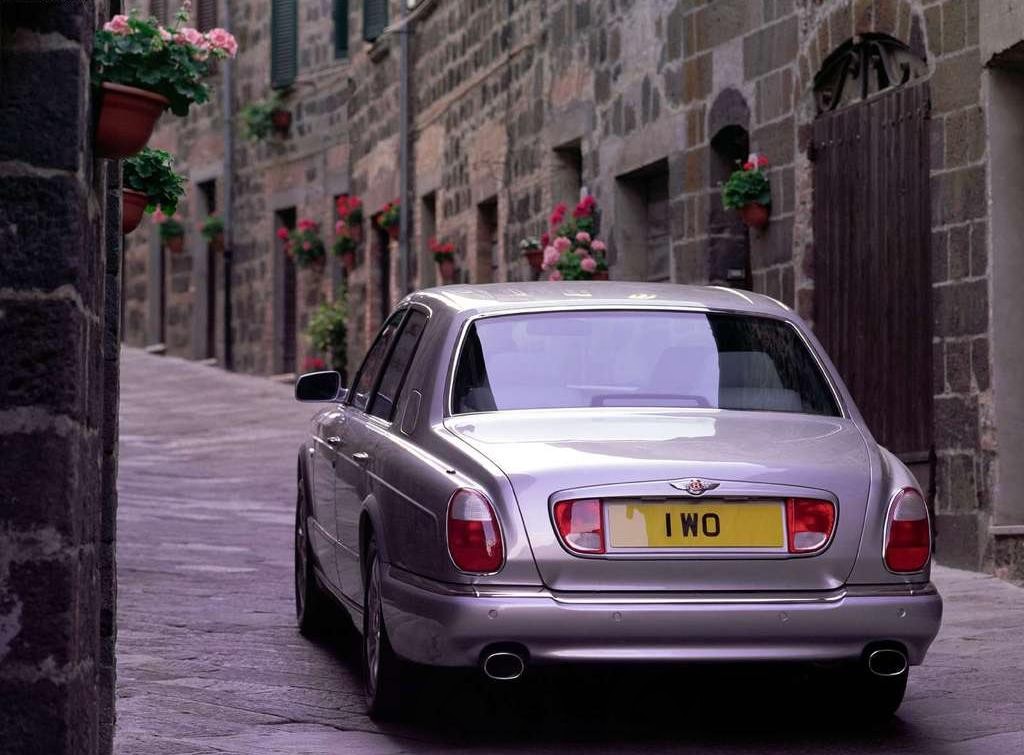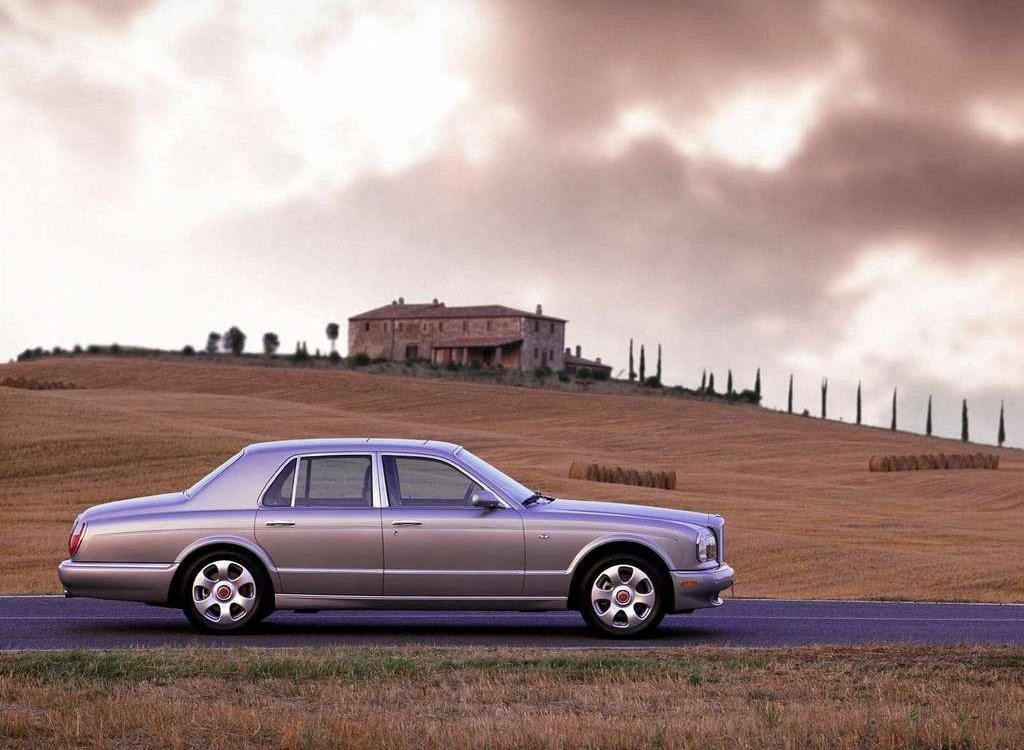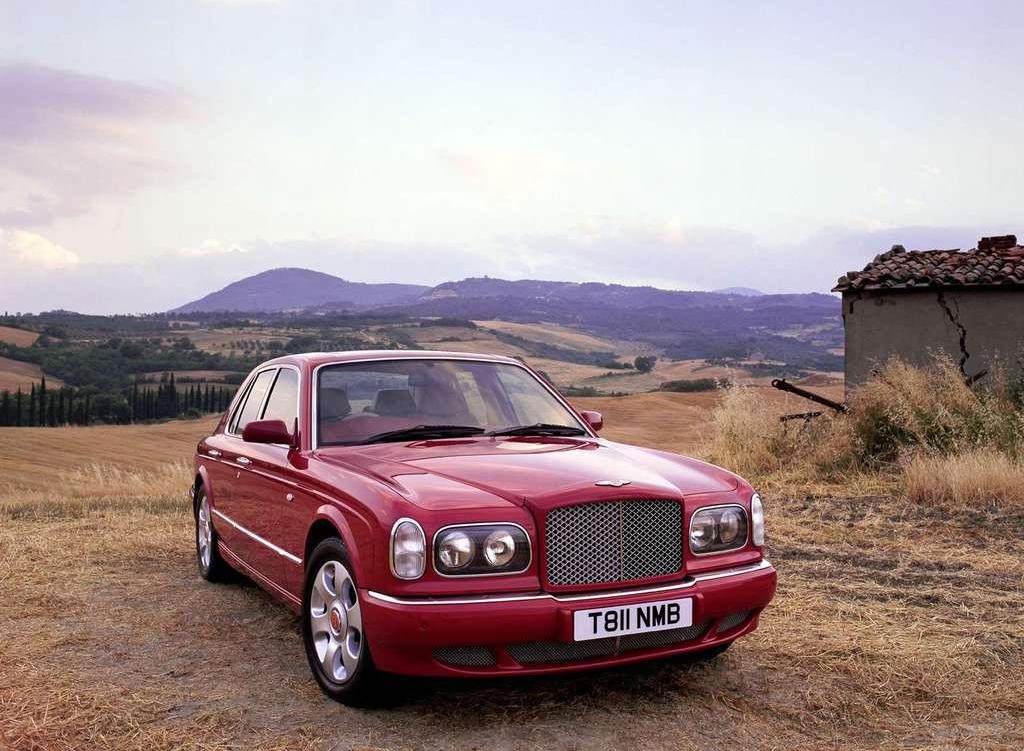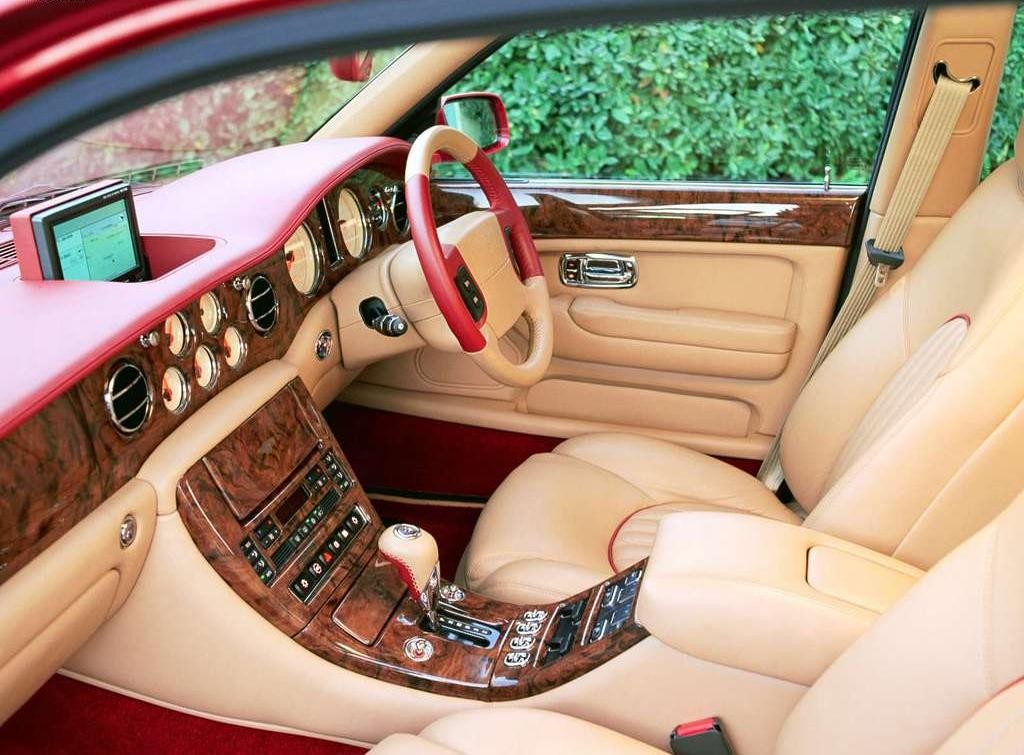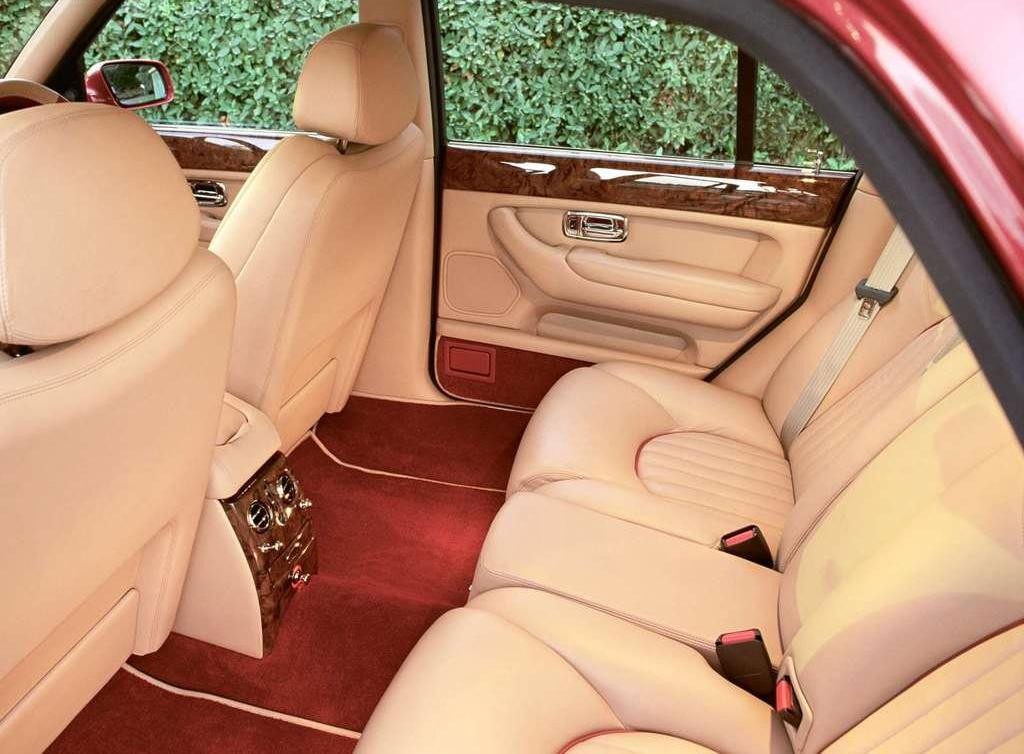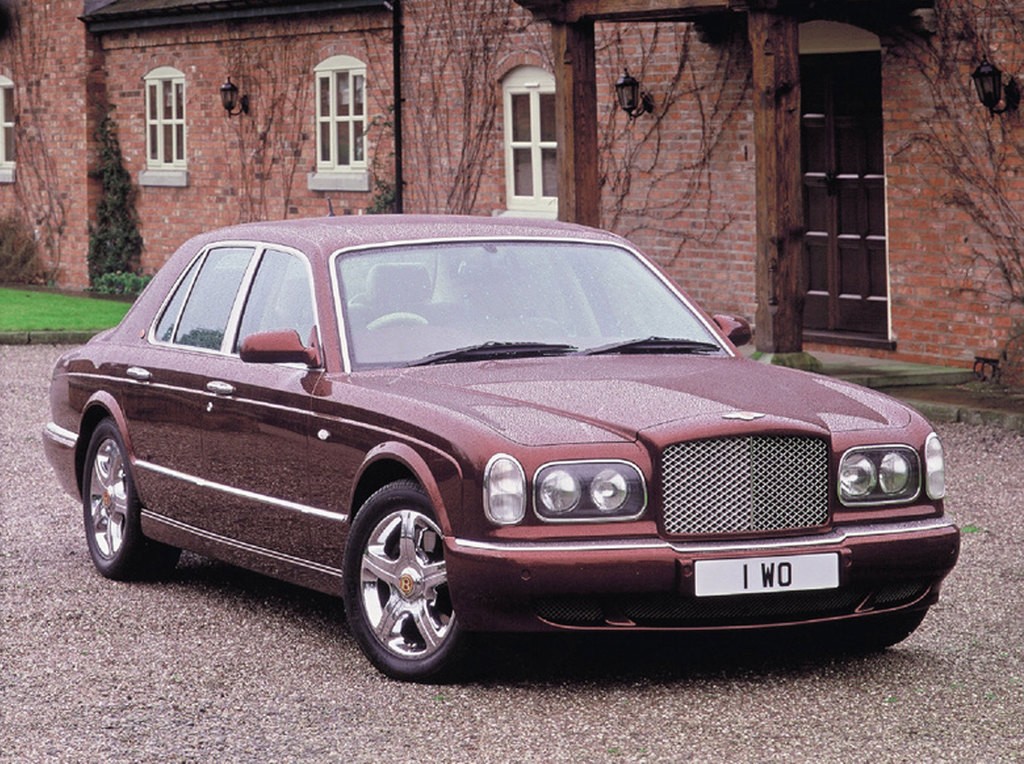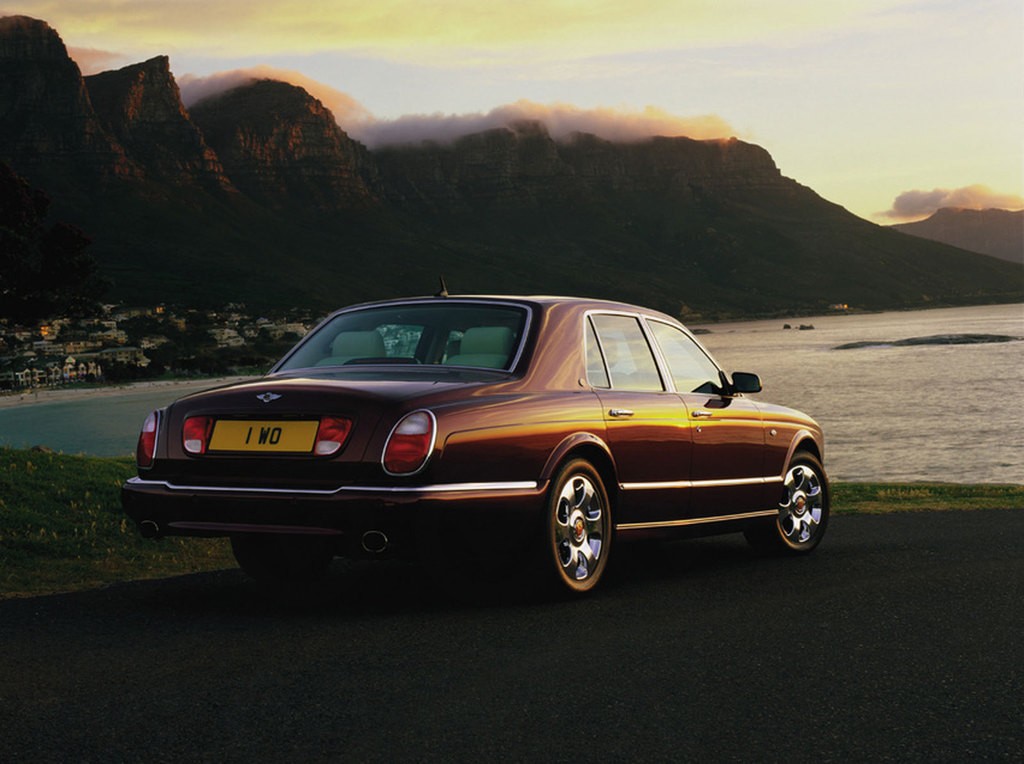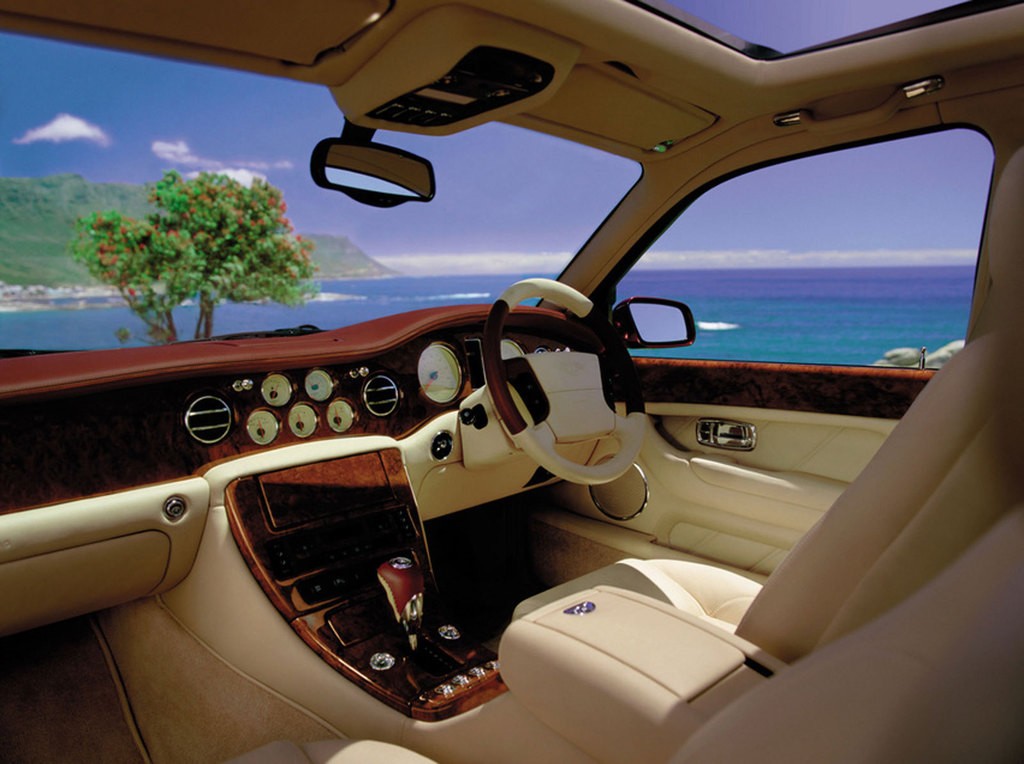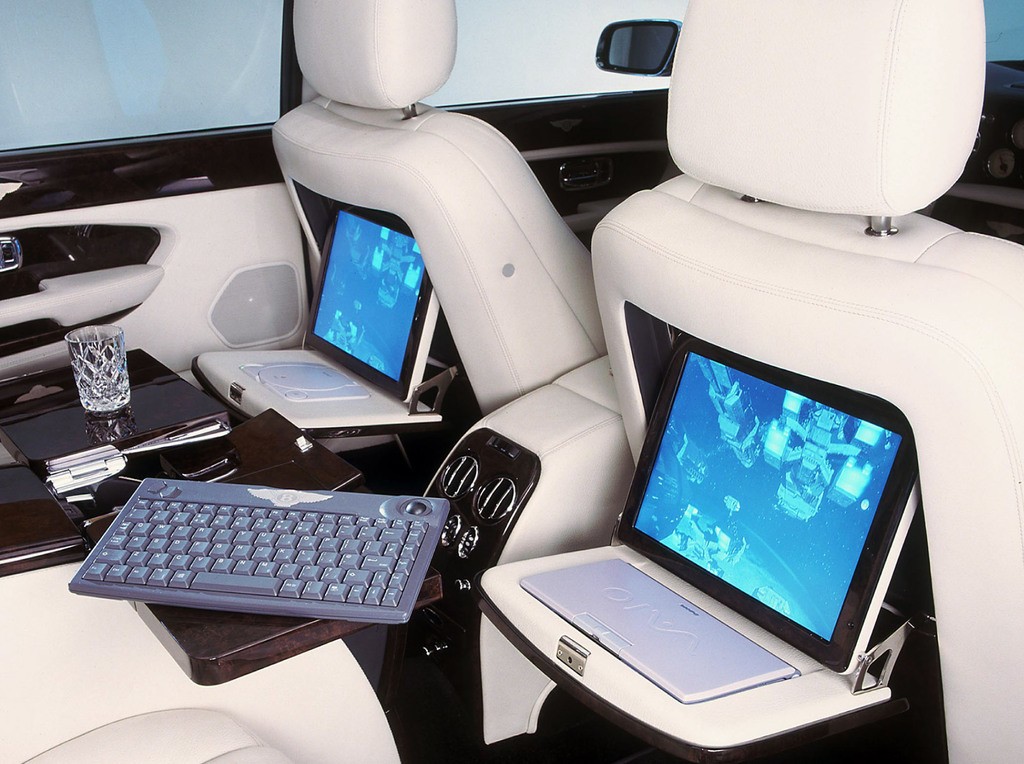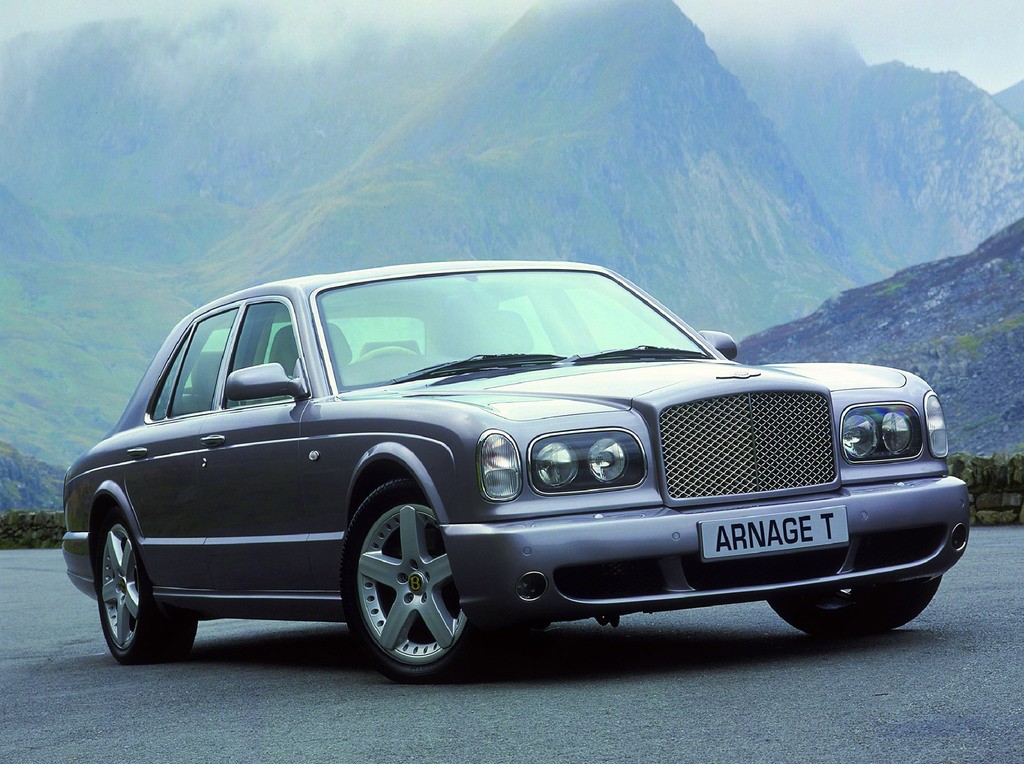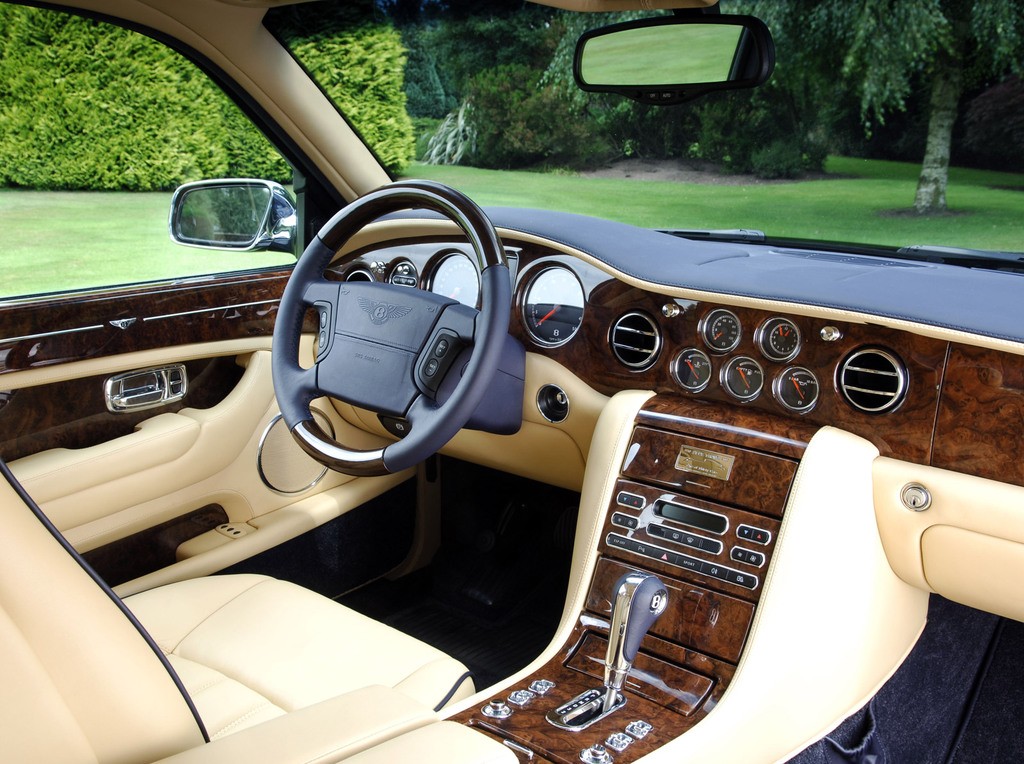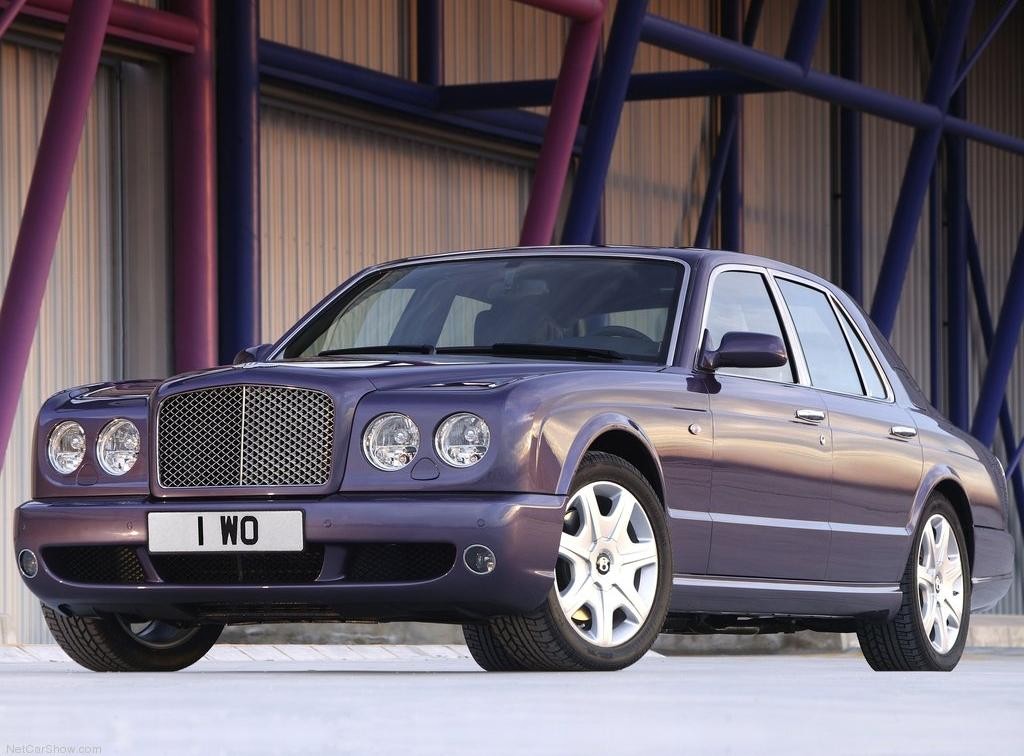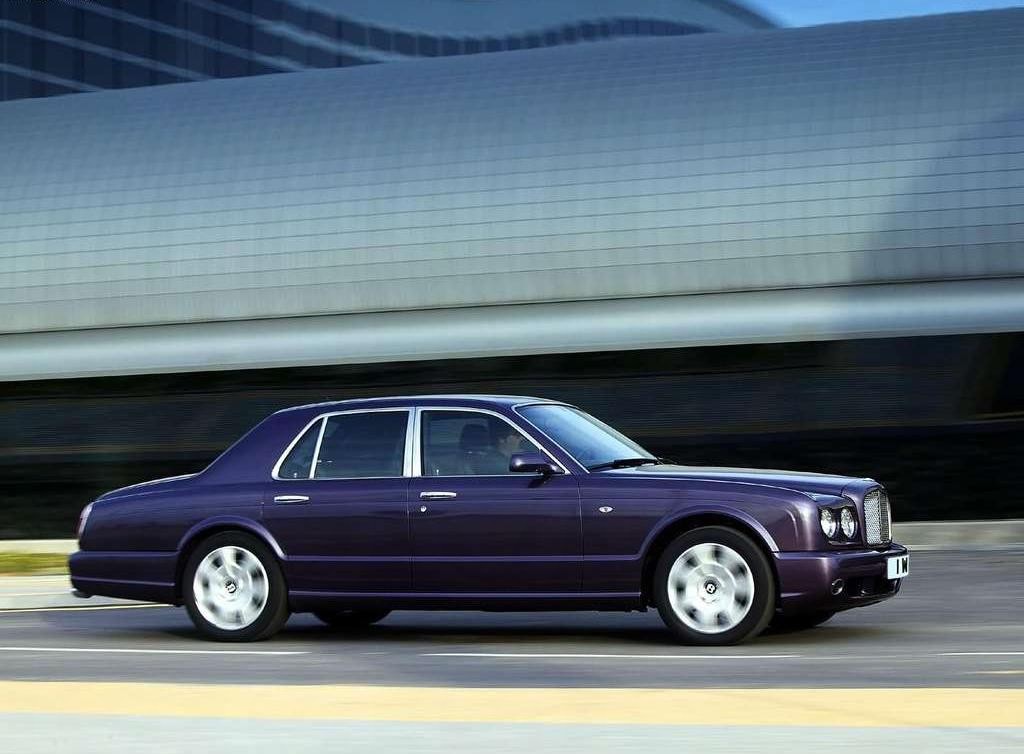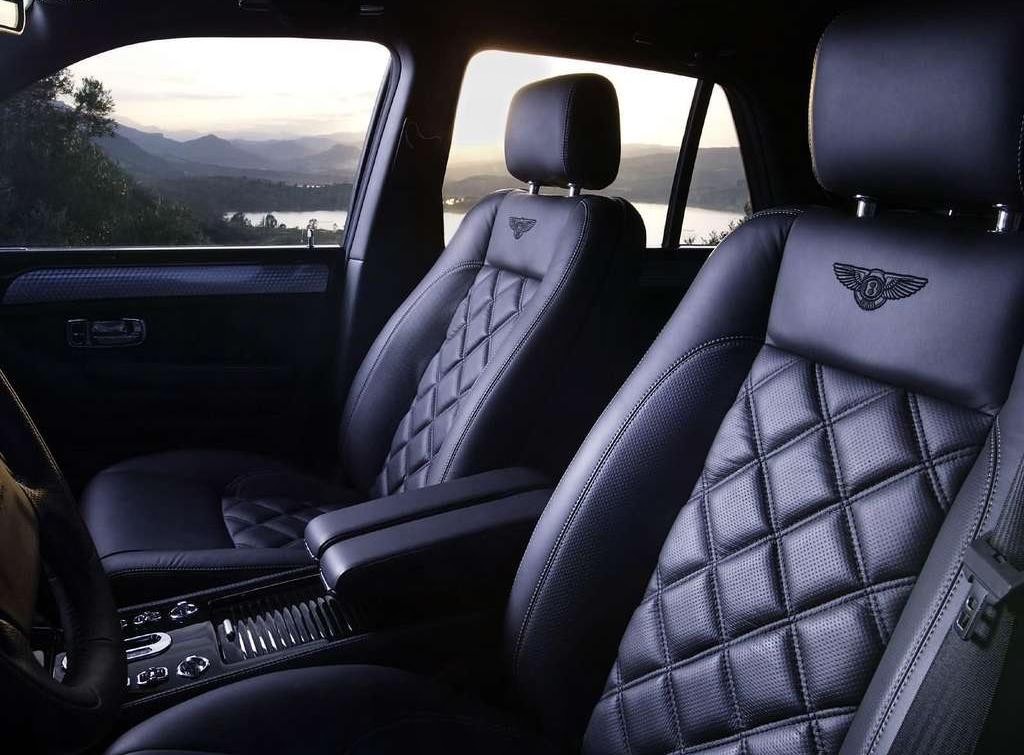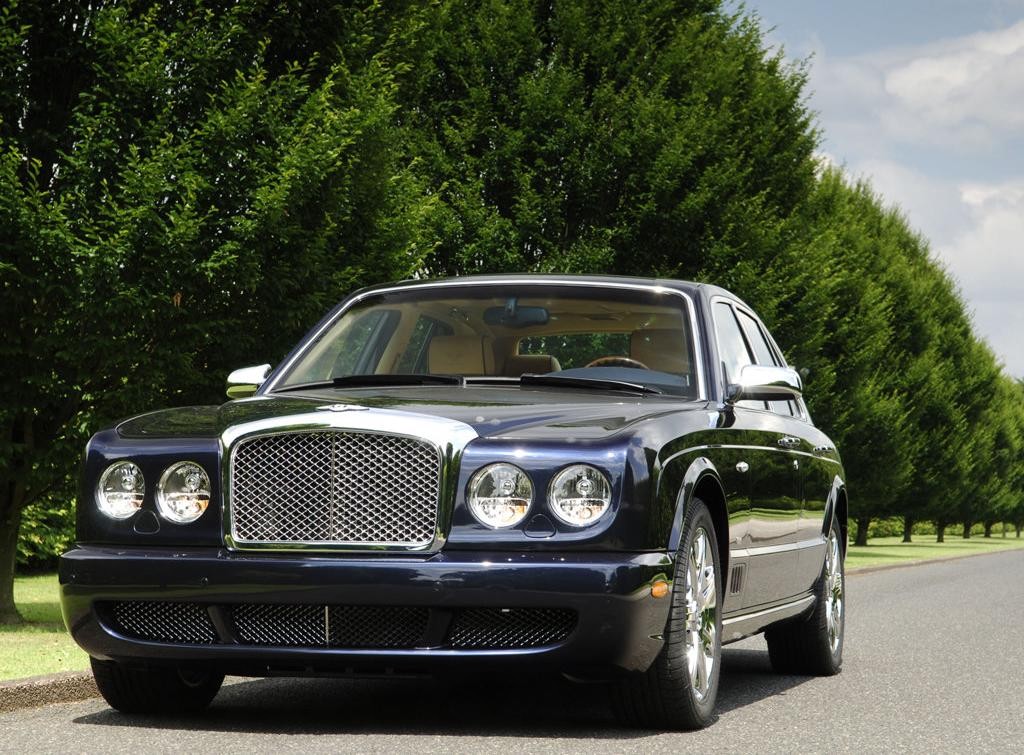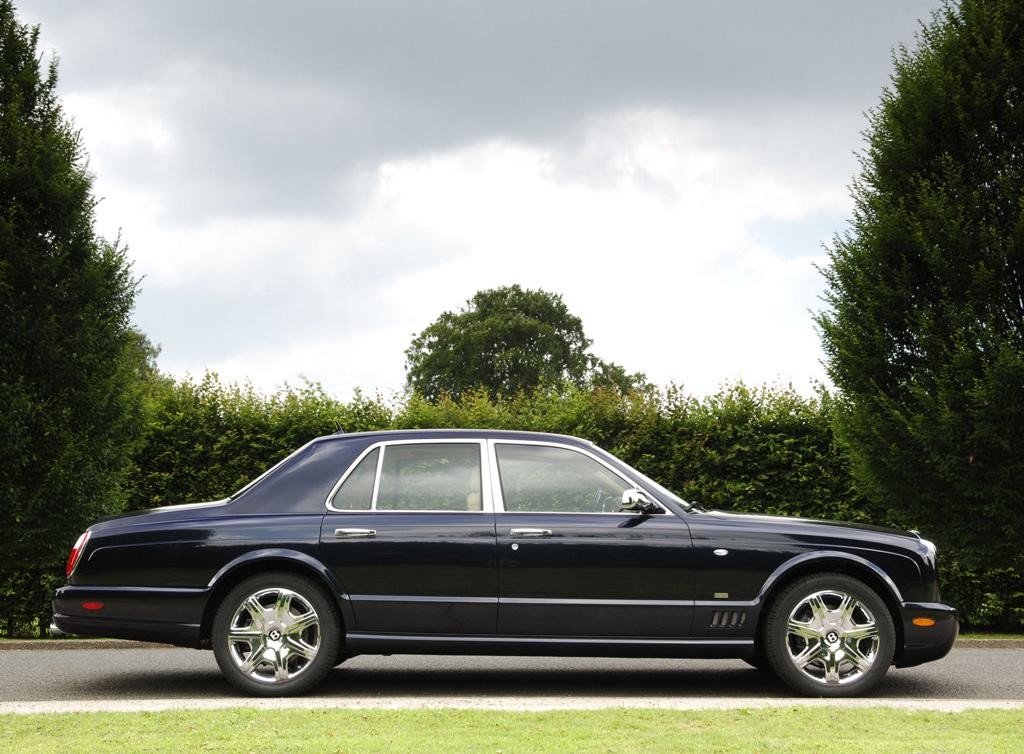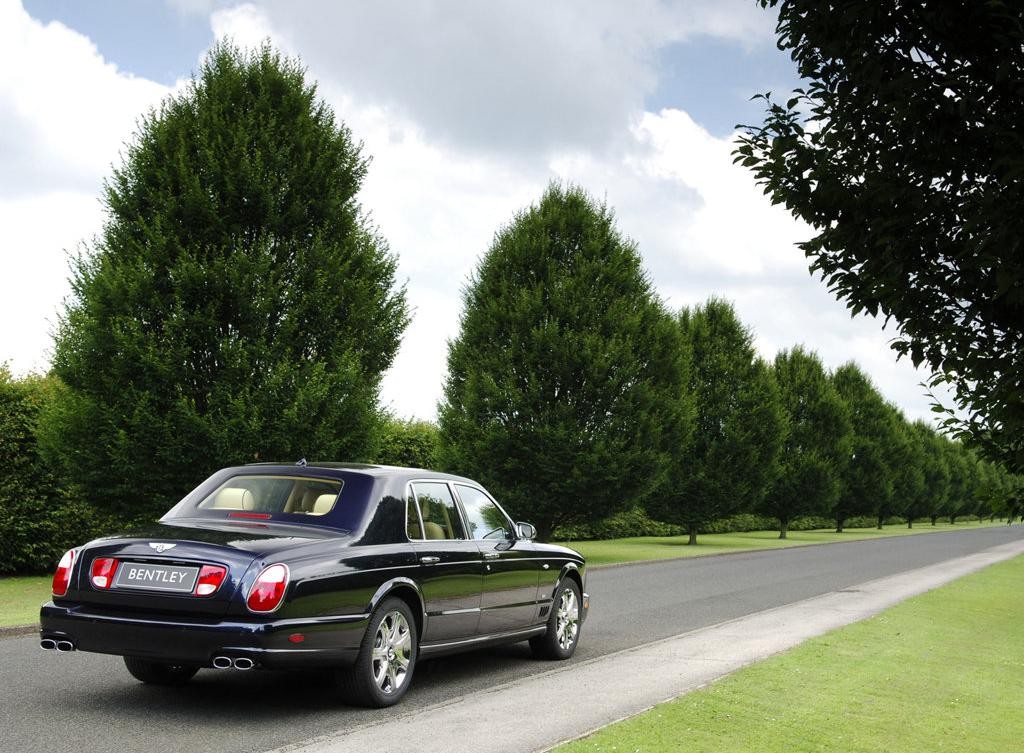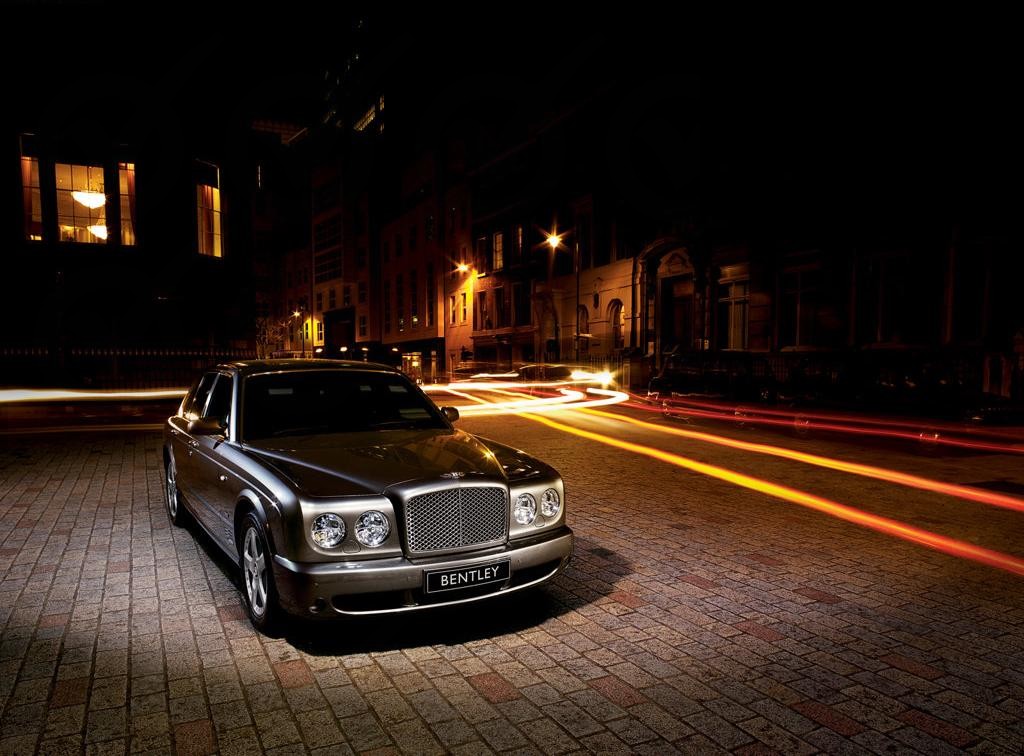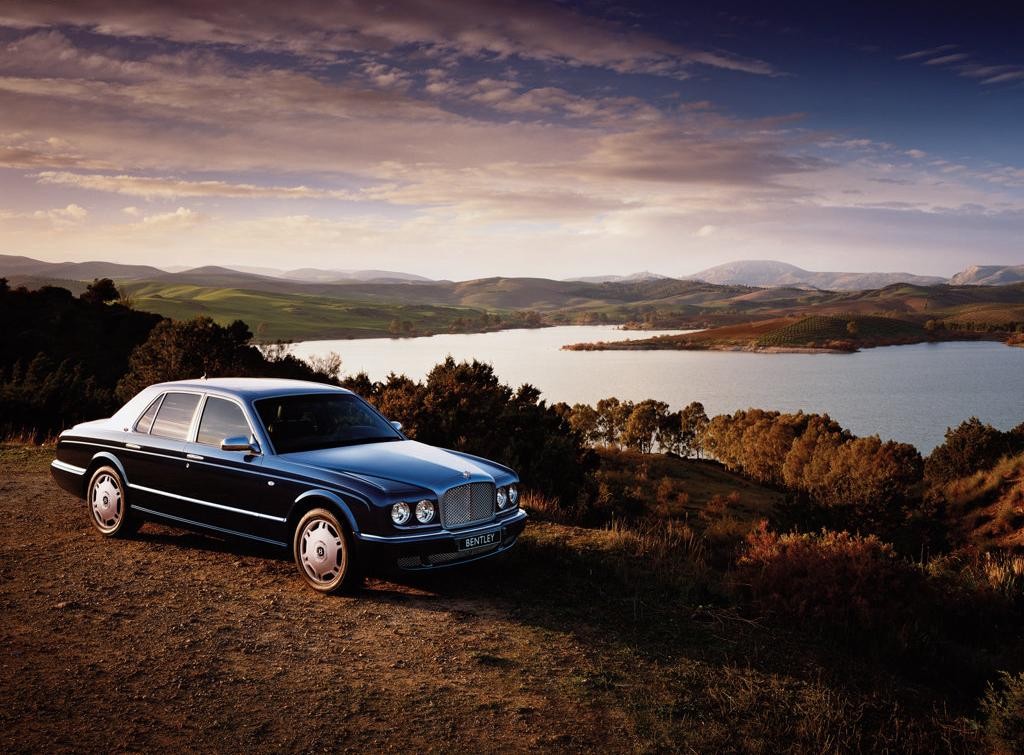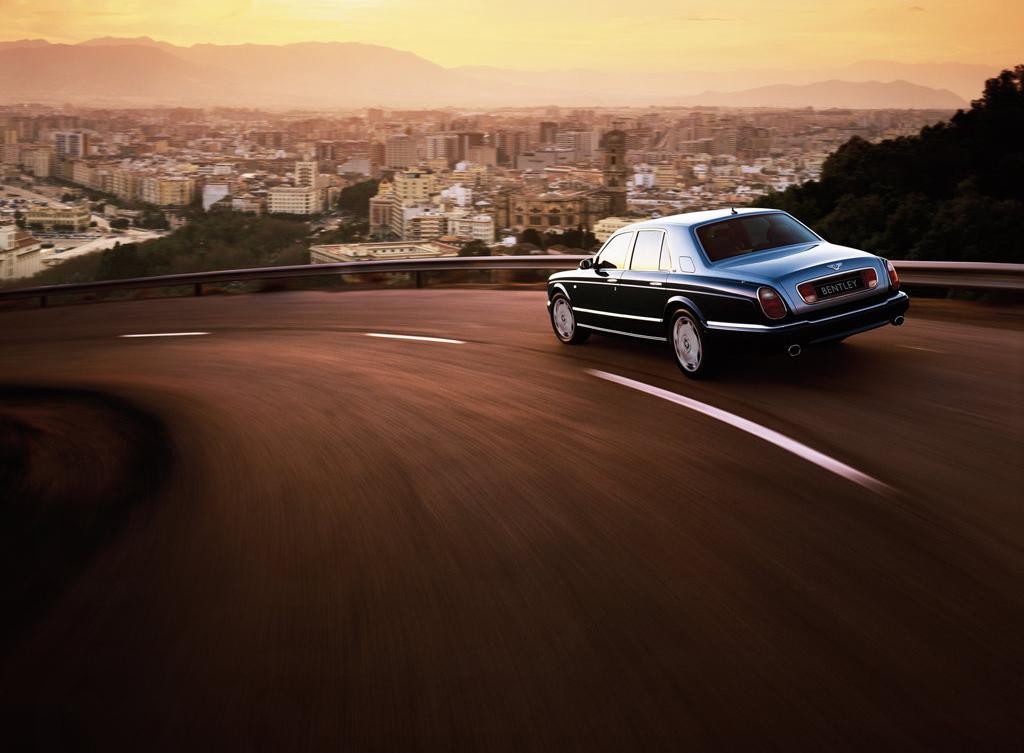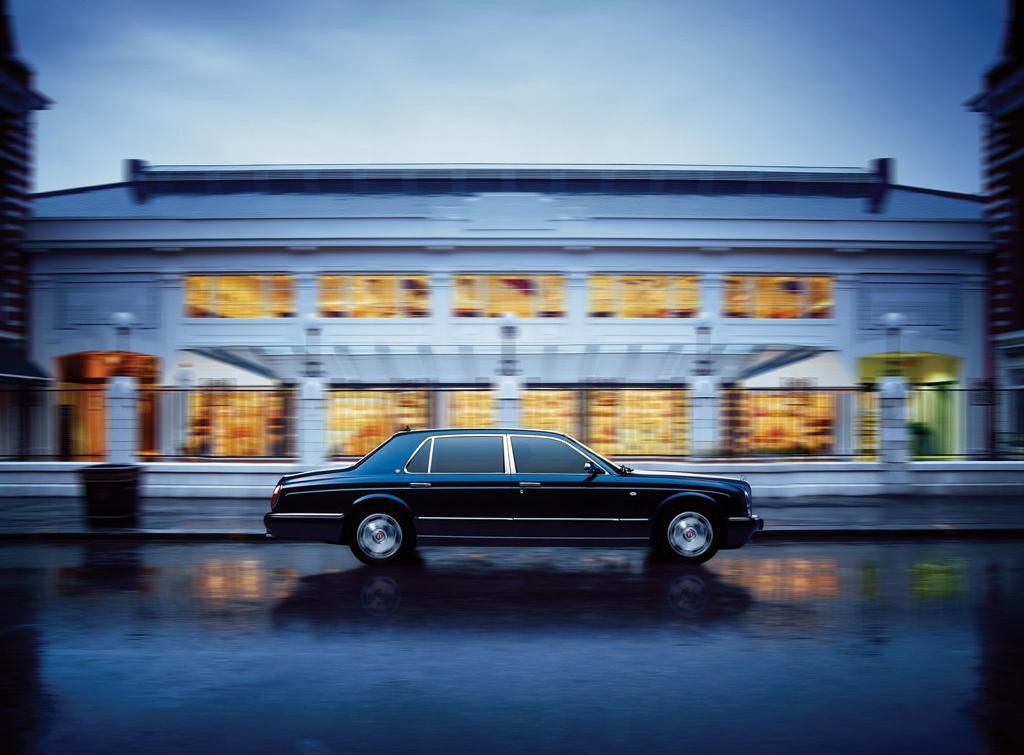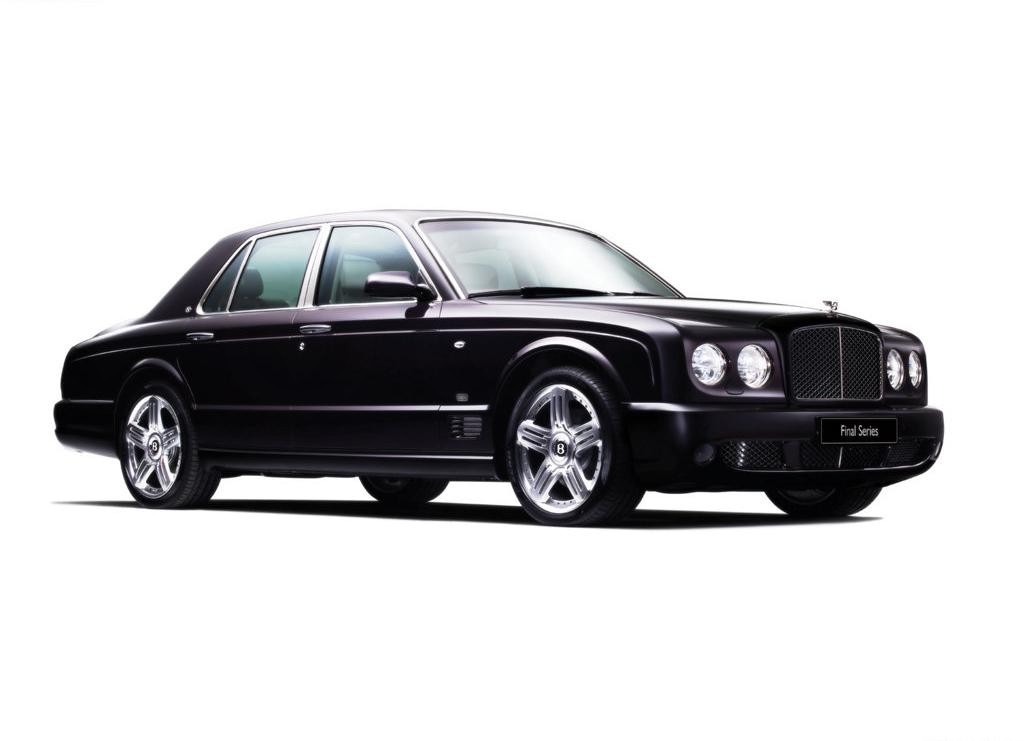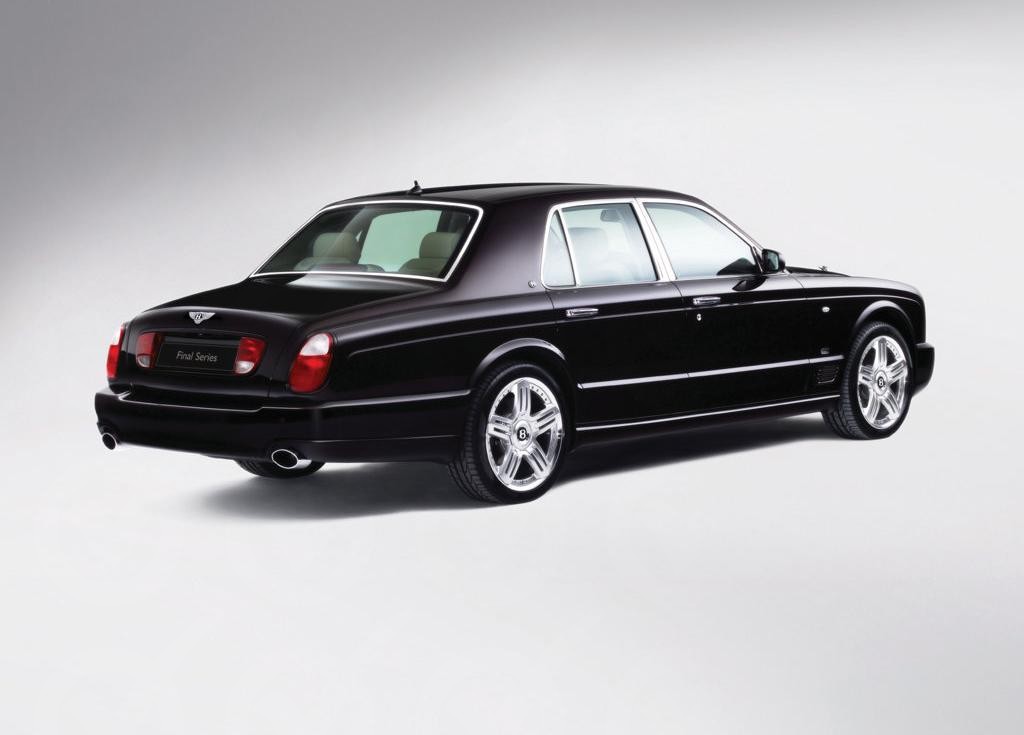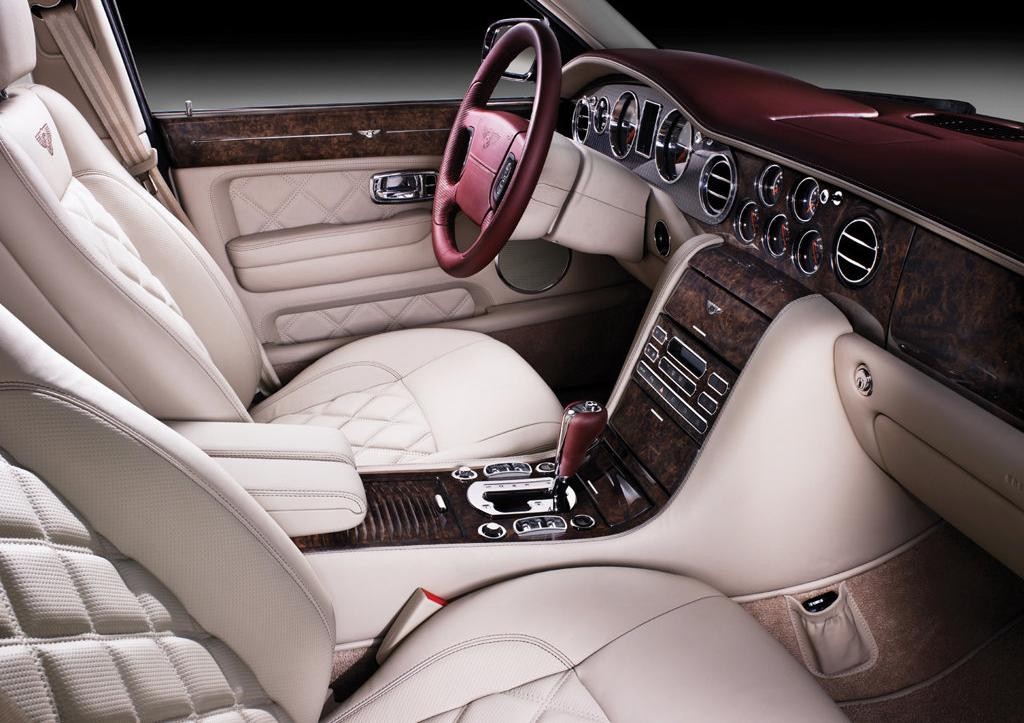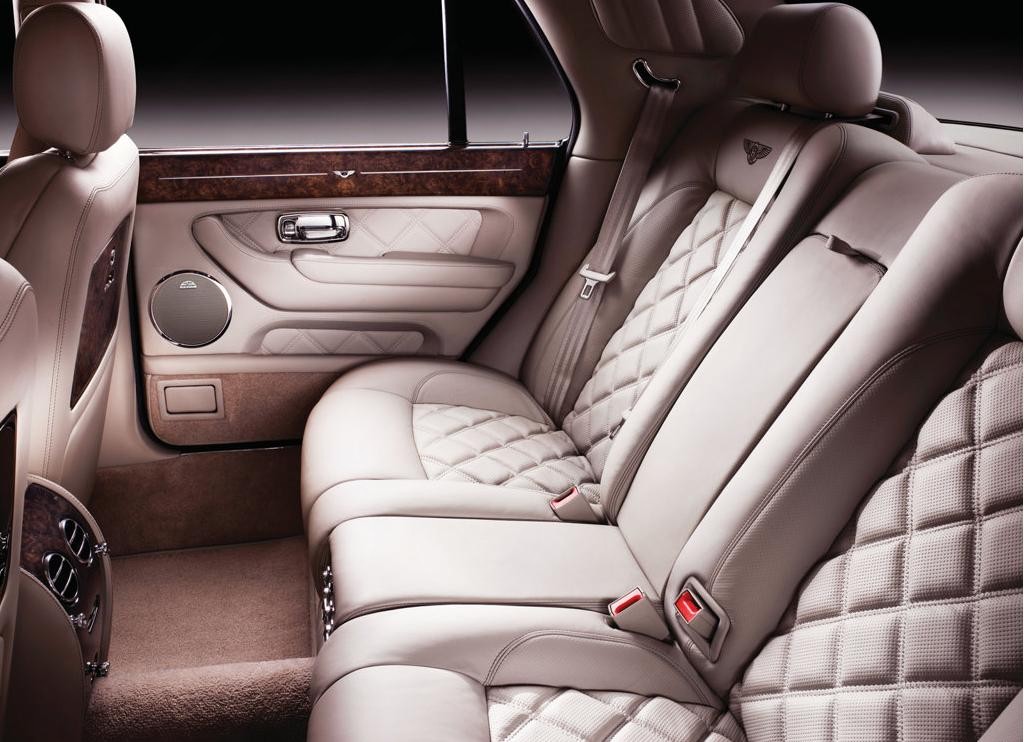
- Twin-turbo 6.75-litre V8 delivers hand-of-god acceleration
- Impressive ride/handling balance
- Prestigious interior
- Arnage Red Label susceptible to head gasket failure
- 2002-06 Arnage susceptible to camshaft and tappet wear
- Weight blunts agility
- Horrendous fuel consumption
Review: Bentley Series I Arnage (1998-02)
Overview
Released in June 1998, the Bentley Series I Arnage was a prestige, rear-wheel drive sedan. Manufactured in Crewe, England, the Arnage range initially consisted of a single, unnamed variant (simply the ‘Arnage’) which was powered by a 4.4-litre Cosworth-BMW twin-turbocharged V8 petrol engine. In 2000, however, the range was revised as the standard Arnage became the Arnage Green Label and Red Label variants were powered by a heavily revised 6.75-litre V8 engine.
Engines
Of the engines,
- The 4.4-litre M62 V8 petrol engine had an aluminium block, sequential fuel injection, fracture-split forged connecting rods, two Honeywell-Garrett GT1752S turbochargers, double overhead camshafts, four valves per cylinder and a compression ratio of 8.5:1. This engine was mated to a five-speed ZF 5HP30 automatic transmission; and,
- The 6.75-litre Rolls-Royce pushrod V8 engine had an aluminium-silicon alloy block, a single Garrett T4 turbocharger and a compression ratio of 8.0:1. This engines and was mated to General Motors’ 4L80-E automatic transmission.
Dimensions and suspension
The Series I Arnage was 5390 mm long, 1932 mm wide, 1515 mm tall and had a 3116 mm long wheelbase. Furthermore, the Arnage had double wishbone suspension with electronically-controlled dampers front and rear.
2000 updates
As part of the 2000 updates, the Arnage body – for all variants – was stiffened by 20 per cent by adding a cast alloy brace in the engine bay, additional stiffening plates in the front tunnel area and further swaging to the floor plan and rear seat squab. Other changes included the introduction of speed-sensitive steering and revised suspension, including stiffer front springs for the Red Label variants. Visually, these updated models could be identified by their 18-inch alloy wheels, plastic headlight lens covers and clear indicator lenses. Inside, new front seat backs were introduced for greater rear seat leg room and the rear seats would automatically move backwards to allow for ease of exit and entry upon the opening of either rear door.
| Years | Engine | Trans. | Peak power | Peak torque | |
|---|---|---|---|---|---|
| Arnage | 1998-99 | 4.4-litre twin-turbo petrol V8 | 5sp auto | 260 kW at 5500 rpm | 570 Nm at 2500-4200 rpm |
| Arnage Green Label | 2000 | ||||
| Arnage Red Label | 2000-02 | 6.75-litre turbo petrol V8 | 4sp auto | 298 kW at 4000 rpm | 830 Nm at 2150 rpm |
| Arnage Le Mans Series | 2001 |
Safety equipment
Standard safety equipment for the Arnage and Arnage Green Label included dual front airbags, ABS, electronic stability control, traction control and front seatbelt pretensioners.
The Red Label and Le Mans Series, however, were not fitted with electronic stability control.
Brakes
The Arnage initially had ventilated front and rear disc brakes measuring 334 mm and 328 mm, respectively. From 2000, however, the brakes were upgraded to 348 mm front and 345 mm rear discs.
Features
Initially, standard features for the Arnage included 17-inch alloy wheels with 255/55 R17 tyres, a ten speaker stereo with an eight-stack CD player, climate control air conditioning, Connolly hide leather upholstery, Wilton carpets, power adjustable front and rear seats, heated front and rear seats, cruise control, rear parking sensors, front fog lights, car phone, remote central locking, power windows and mirrors, power sunroof, a tilt and reach adjustable steering wheel, front seat memory settings, a powered rear blind, trip computer and an immobiliser.
For the Green and Red Label variants, standard features were extended to include 18-inch alloy wheels with 255/50 R18 tyres, a pop-up Alpine satellite navigation system, a six-disc CD changer, front and rear parking sensors and power folding mirrors.
Arnage Le Mans Series
Released in March 2001, the Le Mans Series was produced to commemorate Bentley’s return to the 24-hour Le Mans motor race. Visually, the Le Mans Series was distinguished by its Verdant Green paint finish, five-spoke alloy wheels, red brake calipers, chrome quad exhaust pipes on both sides of the modified rear bumper, vents on the lower front wings and special badges. Inside, the Le Mans Series featured Autumn Hide leather upholstery with contrasting English Tan, instrument gauges finished in racing green, a gear lever finished in English Tan hide and ‘Limited Edition’ insignia on the speedometer and tachometer. Production was limited to 150 vehicles.
Related links
- Rolls-Royce and Bentley: Bentley Arnage Green Label
- Rolls-Royce and Bentley: Bentley Arnage Red Label
Review: Bentley Series II Arnage (2002-04)
Overview
Released in May 2002, the Series II Arnage introduced a revised range which consisted of the Arnage R and Arnage T. Compared to its Series I predecessor, the 6.75-litre V8 engine was fitted with two Garrett T3 turbochargers, new pistons with a revised crown configuration, modified cylinder heads, an upgraded gasket, a new camshaft with revised lift and duration, Bosch Motronic ME7.1.1 engine management (previously Zytek EMS3) and close-coupled catalytic converters located close to the exhaust manifold for reduced emissions. Furthermore, the Bosch engine management system enabled the introduction of electronic ‘fly by wire’ throttle control and the 4L80-E transmission was also upgraded for greater smoothness and faster gearshifts.
The Arnage R replaced the Red Label and was available with standard (3116 mm) and long wheelbase (3366 mm) bodies. For the Series II Arnage, the body structure was stiffened by adding a brace inside the wheel arches, strengthened sills, an extra bow in the roof and a reinforced front bulkhead; the suspension was also upgraded with the introduction of a rear anti-roll bar and a stiffer front anti-roll bar, while 255/50 ZR18 section asymmetric Pirelli P-Zero tyres were fitted as standard. Visually, the Series II Arnage could be identified by its integrated boot spoiler; inside, ISOFIX rear child seat mounts were fitted.
| W/base | Years | Engine | Trans. | Peak power | Peak torque | |
|---|---|---|---|---|---|---|
| Arnage R | Standard, LWB |
2002-04 | 6.75-litre twin turbo petrol V8 | 4sp auto | 298 kW at 4000 rpm | 835 Nm at 3250 rpm |
| Arnage T | Standard | 2002-04 | 6.75-litre twin turbo petrol V8 | 4sp auto | 336 kW at 4100 rpm | 875 Nm at 3250 rpm |
Safety equipment
Compared to its Series I predecessor, standard safety equipment for the Series II Arnage was extended to include front and rear seat-mounted side (thorax) airbags, full-length curtain airbags, brake assist and electronic stability control.
Features
Standard features for the Series II Arnage were largely unchanged.
The Arnage T was distinguished by its new front bumper with lower air dam and Black Label badge. Inside, the seats featured a diamond pattern with perforated hide, contrasting stitching and an embroidered Bentley motif, while the dashboard featured aluminium panels.
Related links
Review: Bentley Series III Arnage (2004-06)
Overview
Released in late 2004, the Series III Arnage could be identified by its four round headlights, including two xenon low-beam headlights with integrated indicator lights, new radiator grille (available in matrix or vaned styles) and raised bonnet. Inside, there was a new centre console, clearer instrument graphics and improved ergonomics. The rear suspension was also revised with recalibrated springs, dampers and bushings. The Arnage range itself, however, was unchanged (until the limited-run Blue Train was released).
| Variant | W/base | Years | Engine | Trans. | Peak power | Peak torque |
|---|---|---|---|---|---|---|
| R | Standard, LWB |
2005-06 | 6.75-litre twin-turbo petrol V8 | 4sp auto | 298 kW at 4000 rpm | 835 Nm at 3250 rpm |
| T | Standard | 2005-06 | 6.75-litre twin-turbo petrol V8 | 4sp auto | 336 kW at 4100 rpm | 875 Nm at 3250 rpm |
| Blue Train Series | Standard | 2005 | 6.75-litre twin-turbo petrol V8 | 4sp auto | 336 kW at 4100 rpm | 875 Nm at 3250 rpm |
Safety equipment and features
Compared to its Series II predecessor, standard safety equipment and features for the Series III Arnage were largely unchanged.
Arnage Blue Train Series
In October 2005, a limited-run Blue Train Series was released. The Blue Train Series was powered by the more powerful 6.75-litre V8 engine, but had the same chassis and suspension set-up of the Arnage R. Visually, the Blue Train Series could be identified by its 19-inch seven-spoke alloy wheels, specially designed front and rear bumpers, stainless steel matrix mesh for the front bumper cooling ducts, a chrome radiator shell, chrome mirror caps, quadruple exhaust tailpipes, ‘Blue Train’ badging on the front wing and door aperture. Inside, the Blue Train Series featured a sunroof, black instrument and dial faces, veneer waist rails with chrome inlays and winged ‘B’ badges, ‘Blue Train’ embroidered headrests, additional wood veneer panels on the doors, contrast piping on the seats and a combination wood and hide steering wheel.
Review: Bentley Series IV Arnage (2006-09)
Overview
Released in October 2006, the Series IV Arnage was fitted with a larger, 6761 cc V8 engine – previously 6749 cc – and a six-speed ZF automatic transmission with selectable Drive, Sport and Semi-Automatic modes (the latter accessed by placing the gearlever into the sequential manual gear-selector gate). Furthermore, the Garrett turbochargers were replaced with low-inertia Mitsubishi units for greater responsiveness and a new roller tappet system was introduced for revised valve timing.
Bentley ‘B’ badges were applied to the D-pillars on all models, while the R and RL variants had bright chrome grille finishes; the Arange T, however, had a dark finish for its front radiator and bumper grilles. Inside, there was a new hide-trimmed gearlever, chrome gearlever bezel and a TFT (Thin Film Technology) driver information panel; there was also a new ‘Sport’ button on the dashboard to engage the sports suspension settings.
| Variant | W/base | Years | Engine | Trans. | Peak power | Peak torque |
|---|---|---|---|---|---|---|
| R | Standard | 2006-09 | 6.8-litre twin-turbo petrol V8 | 6sp auto | 336 kW at 4100 rpm | 875 Nm at 1800 rpm |
| RL | Long | |||||
| T | Standard | 2006-09 | 6.8-litre twin-turbo petrol V8 | 6sp auto | 373 kW at 4200 rpm | 1000 Nm at 3200 rpm |
| Final Series | Standard | 2008-09 | 6.8-litre twin-turbo petrol V8 | 6sp auto | 373 kW at 4200 rpm | 1000 Nm at 3200 rpm |
Features
Standard features for were extended to include a Bluetooth integrated telephone system and tyre pressure monitoring. The newly introduced RL variants were further equipped with a rear centre armrest bottle cooler, veneered rear centre cushion box, Bluetooth master telephone system and a reversing camera.
Arnage Final Series
In September 2008, the Arnage Final Series was released. The Final Series had the same powertrain as the Arnage T, but featured 20-inch alloy wheels, a 1000 watt Naim Audio system, rear picnic tables and four umbrellas. Visually, the Final Series could be identified by its retractable ‘Flying B’ mascot, body-coloured headlight bezels, dark tint matrix upper and lower grilles, lower front wing vents, ‘Jewel-style’ fuel filler cap and special badging. Inside, there were ‘Final Series’ kick plates, drilled alloy pedals, unique chrome trim and a rear cocktail cabinet. Production of the Arnage Final Series was limited to 150 vehicles.
Brochures
- Brochure: Bentley Series IV Arnage (January 2007)
- Brochure: Bentley Arnage Final Series (September 2008)
Related links
